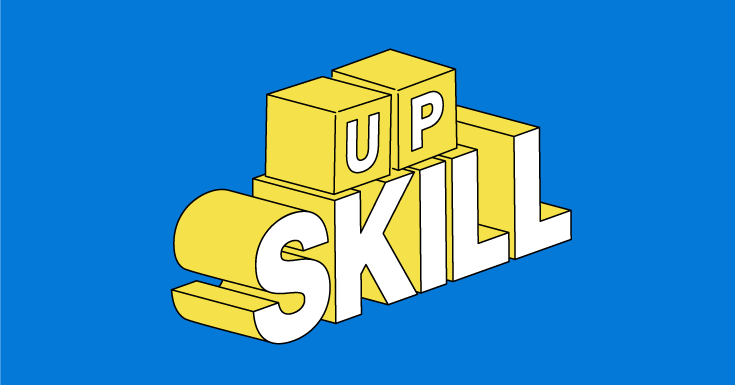Tips for Leveraging Institutional Resources to Upskill Higher Education Employees
Senior Analyst

Colleges and universities are constantly being challenged to do more with less. What if you could train and upskill faculty and staff by making your existing resources work harder for you? You can.
In today’s rapidly evolving higher education landscape, institutions need to equip staff with the necessary skills to adapt and succeed. Thankfully, institutions can harness a powerful array of existing resources to support ongoing training and upskilling programs for employees. This blog post will explore how institutions can utilize their Learning Management Systems (LMS) and internal expertise to foster innovation, create a culture of continuous education, and recruit and retain top talent.
How Your Learning Management System Can Be Used for Professional Development
The LMS plays an essential role in course planning, delivery, and administration, but its capabilities can extend far beyond those functional features. While not yet commonly used for this purpose, institutions can also leverage their LMS to create tailored training and professional development programs for faculty and staff. Here’s how:
- Customized Learning Paths: LMS platforms can be configured to offer customized learning paths for employees based on their job roles and learning objectives. For instance, administrative staff might benefit from courses on project management and office productivity tools, while technical staff could focus on the latest advancements in their field.
- Microlearning Modules: The LMS can host microlearning modules, which are short and focused lessons that employees can complete at a cadence and pace that best suits their learning styles and availability. Offering microlearning modules ensures that institutional team members have ample opportunities to upskill despite their busy schedules.
- Interactive Assessments: By creating and administering team member assessments within the LMS, both managers and employees can consistently track their progress and grasp of new skills, as well as identify areas that require further attention.
- Collaborative Features: Most LMS platforms have collaborative features including discussion boards and chat rooms. These features can facilitate peer-to-peer learning, allowing employees to share knowledge and experiences.
3 Use Cases for Leveraging Your LMS for Staff and Faculty Training
To better illustrate how an LMS can be leveraged for staff and faculty training, let’s explore a few practical use cases.
- New Employee Onboarding: Utilize the LMS to deliver a comprehensive onboarding program for new hires. From introductory courses to institutional policies and procedures, the LMS can provide a centralized hub for all necessary training materials. Leverage features like interactive modules, videos, and assessments to ensure new employees receive a thorough and engaging orientation.
- Compliance Training: Compliance training is a crucial aspect of professional development and institutional risk management. Use the LMS to deliver mandatory training programs, such as Title IX training, data governance, or cybersecurity awareness to ensure staff and faculty are aware of and adhere to institutional policies. Furthermore, the LMS’s tracking capabilities can help you monitor completion and generate reports required to document compliance.
- Advanced Skills Development: Encourage staff and faculty to pursue advanced skills and certifications by offering specialized courses or professional development programs through the LMS. Whether it’s instructional design, data analytics, how to leverage AI, or online teaching methodologies, the LMS can provide a platform for individuals to deepen their expertise and stay at the forefront of their fields.
As noted in the above use cases, there are a variety of LMS tools and features to fit each upskilling purpose. For example, interactive modules, multimedia resources, and discussion forums can facilitate engagement in an employee onboarding program. If you’re using the LMS for compliance training, you may benefit from assessment tools, simulation-based learning, and automatic reminders for unfinished modules.
Internal Expertise to Support Training and Upskilling
Because faculty are experts in their respective fields and possess valuable knowledge and teaching skills, their expertise can be applied to upskill employees in several ways through the LMS or offline via faculty-led workshops, guest lectures, and mentoring programs. Instructional designers can also help create training and upskilling programs. Leverage their extensive experience in curriculum design, content development, and learning experience optimization and enhancement to ensure more effective outcomes.
Institutions should be mindful that informal training led by existing team members in the same department can perpetuate misguided and inefficient approaches if the trainer is using outdated methods that don’t reflect best practices. Another common pitfall is that new team members are onboarded in a vacuum and only understand their specific job function without grasping the broader context of how their role fits into the institution’s overall operations and goals.
Training must go beyond merely teaching users how to do their job-specific tasks in a particular system. Team members must be taught current product functionalities and system capabilities. They also need to gain an understanding of data governance, security, Title-IX, FERPA, customer service, project management, and other in-demand skills that will elevate the outcomes of the entire institution. After all, upskilling is not just about how to use technology; it’s also about understanding when to apply it appropriately.
Where to Start?
While many higher education institutions have an LMS and training content, they are not connected because many have not made the same investments in professional development programs as they have with their courses for students. It can be overwhelming to determine where to begin in transitioning siloed training programs into a more robust system like an LMS. My advice? Start small. Prioritize training and upskilling courses and programs based on the greatest need and widest reach within the institution. Start with a small pilot group, refine and launch the program, and expand from there.
Takeaways
By harnessing the power of the LMS and internal resources, colleges and universities can streamline training initiatives, improve accessibility, and enhance engagement. Valuable upskilling and training programs not only benefit team members by enhancing their skills and knowledge, they also strengthen the institutional culture by fostering and reinforcing its communal commitment to lifelong learning and innovation. Such programs also have the added benefit of enabling institutions to maximize the value and use of their existing technology investments. Last but certainly not least, upskilling programs aligned with these best practices directly contribute to an institution’s success and resilience by helping them attract and retain the best talent in a competitive labor market.
Want to learn more about how you can maximize the value of your LMS? Let’s talk. Contact Tambellini today.
You Might Also Like
- Generative AI in the LMS: A Looming Dichotomy of Instructional Quality
- Use Your LMS to Move from Lag to Lead Measures in Student Success
- 6 Tips to Ensure Shared Services Success at Your Institution
- John Carroll University Improves Constituent Engagement with Slate for Alumni & Advancement and Preps to Deploy Slate for Student Success
Categories
- Academic Administration
- Advancement
- AI and ML
- Content Management
- CRM Platforms
- Customer Experience (CX)
- Cybersecurity
- Data Management and Analytics
- Enterprise Portals and Mobile Apps
- Event Management
- Finance
- HCM/HR
- IT Tools and Infrastructure
- Life at Tambellini
- Services
- Student
- Teaching and Learning
- Technology Leadership
- Thought Leadership
- Uncategorized
Share Article:

Other Posts From this Author:
© Copyright 2025, The Tambellini Group. All Rights Reserved.